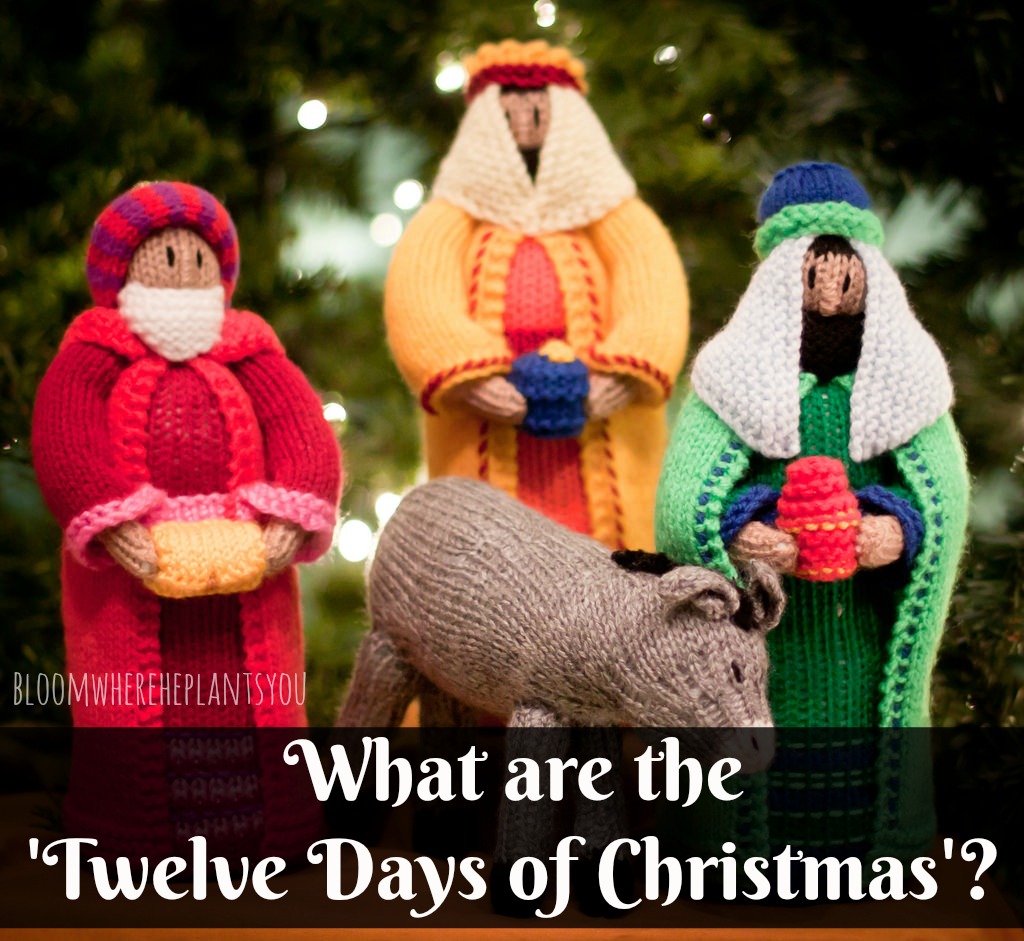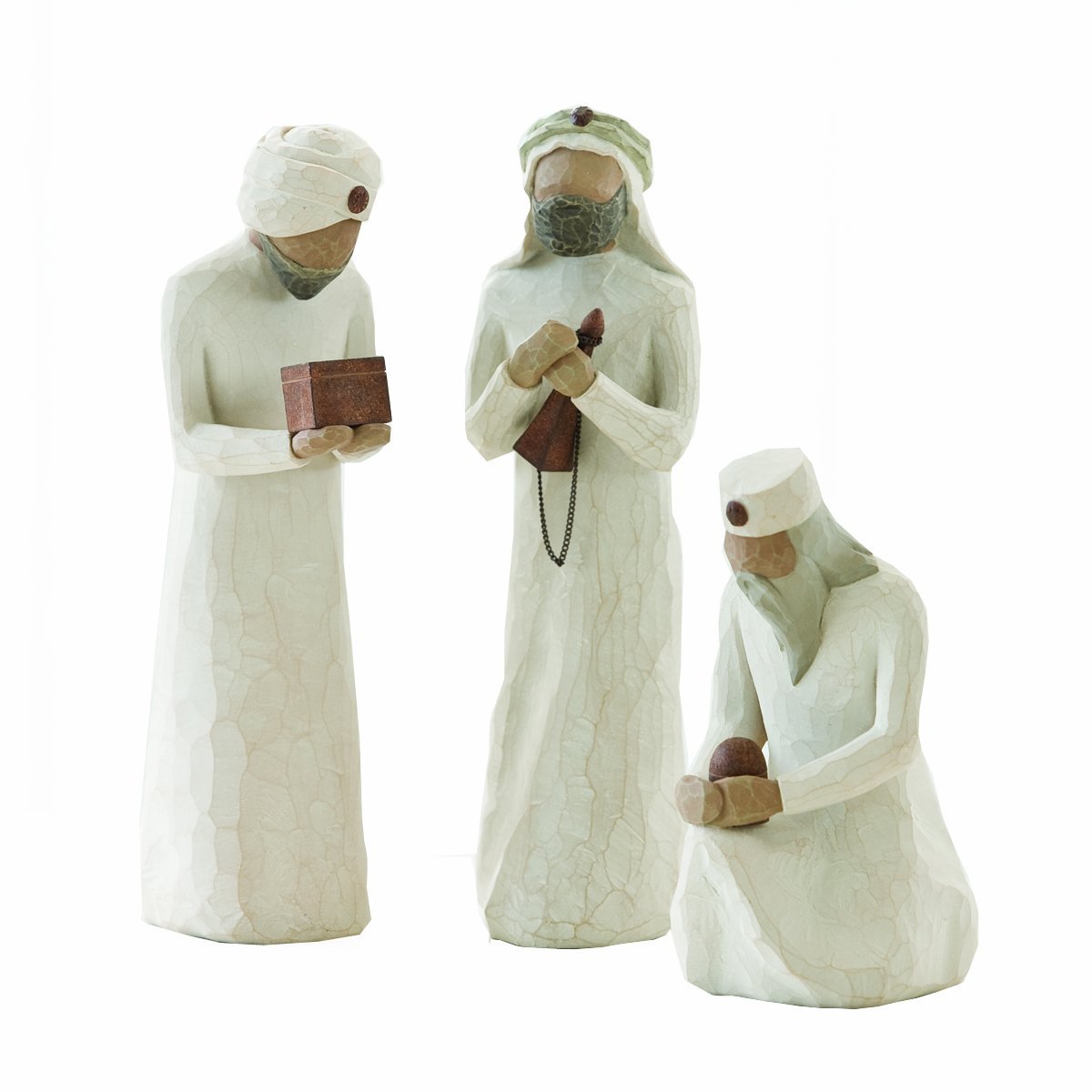I can remember visiting my mother-in-law in Hungary for the first time in 2009. It was about a week before Christmas and I was homesick something awful and missing celebrating my family’s Christmas traditions back home, the way we’d done it for as long as I can remember.
One thing that struck me that visit was that my mother-in-law had no Christmas tree. I waited until the 23rd to say something to my husband about it, and he informed me that in his family the tree was not put up or decorated until Christmas Eve (a common Hungarian Christian tradition) and not taken down until after January 6th! Not until Christmas Eve?! Left up through January?! What the what?
He went on to tell me that his family celebrated the Twelve Days of Christmas leading up to the Epiphany on January 6th. Now, I was raised Catholic and had absolutely no idea what he was talking about! Ha! So, I did a little research when we got home.
The traditional Christian celebration of Christmas begins with the season of Advent (the fourth Sunday before Christmas) and lasts nearly a month while Christians await the coming of Jesus Christ. But the Christmas season doesn’t end with the celebration of His birth on the 25th! Nope! There are a whole 13 more days of celebrating that last through January 6th with the Feast of the Epiphany or Adoration (the day the Three Wise Men finally reached the manger, adored the baby Jesus, and presented Him with gifts). The 12 Days of Christmas have been celebrated in Europe since before the middle ages and were a time of great celebration!
So, each of the 12 Days has a significant meaning and is meant to celebrate, remember, or honor important people or events in the Christian faith:
- Day 1 (12/25) is Christmas Day which celebrates the Birth of Jesus Christ.
- Day 2 (12/26) is St. Stephen’s Day which honors the first Christian martyr. This is also a traditional day for showing generosity to the poor.
- Day 3 (12/27) honors St. John the Evangelist who affirmed the Incarnation of Christ – “The Word was made flesh, and dwelt among us” (John 1:14, KJV).
- Day 4 (12/28) is the Feast of the Holy Innocents which remembers the male children King Herod ordered killed while he was trying to find and murder the Baby Jesus.
- Day 5 (12/29) honors St. Thomas Becket who was the Archbishop of Canterbury in the 12th century and was murdered on this day in 1170 for challenging the King’s authority over the Church.
- Day 6 (12/30) honors St. Egwin of Worcester.
- Day 7 (12/31) is New Year’s Eve – Pope Sylvester I is also celebrated on this day.
- Day 8 (1/1) honors Mary, the Mother of Jesus.
- Day 9 (1/2) honors St. Basil the Great and St. Gregory of Nazianzus.
- Day 10 (1/3) is the Feast of the Holy Name of Jesus meant to remember when Jesus was officially ‘named’ in the Jewish Temple.
- Day 11 (1/4) honors St. Elizabeth Ann Seton, the first American saint.
- Day 12 (1/5) honors St. John Neumann, the first Bishop in America.
Day 12, or the Twelfth Night, is known as Epiphany Eve. This is when the figures of The Magi, Wise Men, or Three Kings are traditionally placed into the Nativity Scene symbolizing the adoration of Jesus – which is celebrated on the Epiphany on January 6th.
Many who celebrate the 12 Days of Christmas give a small gift to children for each day leading up to the Epiphany and then a larger more significant gift on the 6th similar in tradition to Hanukkah.
Here are some fun facts about the Epiphany or Three Kings’ Day:
- The kings’ names were Melchior, Caspar, and Balthazar and were from Europe, Arabia, and Africa respectively.
- They gave Jesus gold, the essential oil frankincense, and the resin myrrh. These gifts were symbolic of the importance of Jesus’ birth: the gold represented His royal standing; the frankincense His divine birth; and the myrrh for His mortality.
- The kings brought their gifts in vessels called ciboria.
- In some countries, children place their shoes outside the door filled with hay for the kings’ camels to eat and leave letters to the kings. Others leave their old shoes outside the night before to be filled with small gifts when they awake.
- Latin countries serve Rosca de Reyes – a round fruitcake with a small figure of a baby Jesus hidden inside – and sing aguinaldos, or Christmas carols.
The traditional ’12 Days of Christmas’ carol is also said to have significant meaning for Christians. There are differing opinions as to whether this song was some sort of secret way for Christians to share and profess their faith in times of persecution or if it was a song meant to help children learn about their faith. Here is a translation of the popular lyrics:
- The “True Love” sung in each line represents God.
- The “partridge in the pear tree” represents Jesus Christ as a mother partridge that feigns injury to decoy predators from her helpless nestlings.
- The “two turtle doves” were the Old and New Testaments of the Bible.
- The “three French hens” stood for faith, hope, and love – the three gifts of the Spirit that abide (I Corinthians 13).
- The “four calling birds” were the four gospels of Matthew, Mark, Luke, and John.
- The “five golden rings” represented the first five books of the Old Testament (Genesis, Exodus, Leviticus, Numbers, and Deuteronomy), which describe man’s fall into sin and the great love of God in sending a Savior.
- The “six geese a-laying” stood for the six days of creation that confess God as Creator and Sustainer of the world (Genesis 1).
- The “seven swans a-swimming” represented the seven gifts of the Holy Spirit (wisdom, understanding, counsel, knowledge, fortitude, piety, and fear of the Lord).
- The “eight maids a-milking” were the eight beatitudes: Blessed are the poor in spirit, those who mourn, the meek, those who hunger and thirst for righteousness, the merciful, the pure in heart, the peacemakers, those who are persecuted for righteousness’ sake. (Matthew 5:3-10)
- The “nine ladies dancing” were the nine fruits of the Holy Spirit: love, joy, peace, forbearance, kindness, goodness, faithfulness, gentleness and self-control. (Galatians 5:22)
- The “ten lords a-leaping” were the Ten Commandments.
- The “eleven pipers piping” stood for the eleven faithful Apostles: Simon Peter, Andrew, James, John, Philip, Bartholomew, Matthew, Thomas, James bar Alphaeus, Simon the Zealot, Judas bar James. (Luke 6:14-16) Judas Iscariot, who betrayed Jesus, was the twelfth.
- The “twelve drummers drumming” symbolized the twelve points of belief in the Apostles’ Creed.
See? The Christmas season does not have to end with a mad dash to the return lines or getting the tree packed up and put away on the 26th. Or with the endless streams of guilt over not having done all.the.stuff and made all.the.memories before the shot clock ran out on the 25th. The 12 Days of Christmas is sort of like a Christmas extension or “grace period” where you get an extra 13 days to get in all of those things you wanted to do but ran short on time or energy.
I have actually come to love celebrating through the 12 Days of Christmas and the Epiphany. Every year we travel to Hungary in November and don’t return until the first week (or later) in December. We are fighting jet lag, adjusting to a crazy 10-hour time change, and always, always dealing with being super sick. By the time we get around to feeling normal again, December is nearly over and we are in a crazy panic to hurry and do all the Christmas stuff (get the tree up, decorate the house, shop, bake, pretend like we’re actually getting Christmas cards out again…) and don’t have the time to slow down and actually enjoy doing all the Christmas-y stuff! But, with the 12 Days of Christmas, we can finish up our Truth in the Tinsel Advent activities, bake those Christmas cookies, drive to see holiday light displays (with less traffic!), enjoy the tree a bit longer (without feeling like we’re just being too lazy to take it down!), stay up late and watch Christmas movies, and whatever else we really wanted to get done.
Merry Christmas y’all!



Leave a Reply